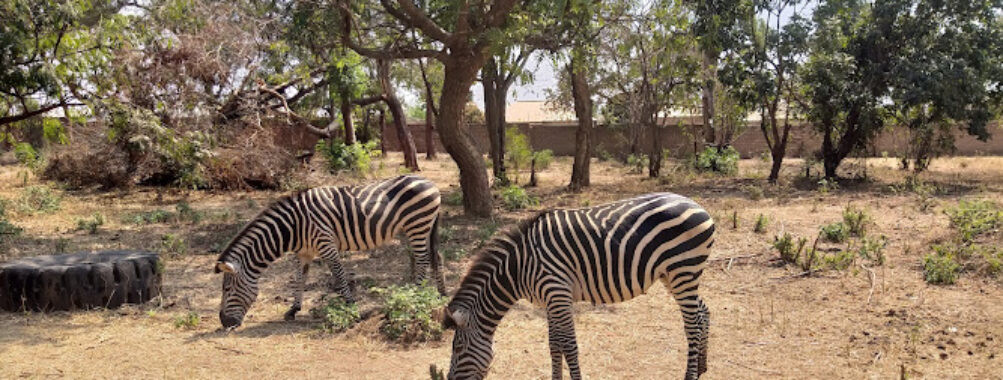
Munda Wanga Environmental Park
Table of Contents
Description
Munda Wanga Environmental Park is one of those places that’s hard to put in a neat little box. On one hand, it’s a botanical garden with shady paths, bursts of color from blooming flowers, and the kind of peaceful corners where you can hear your own thoughts. On the other, it’s a wildlife sanctuary with rescued animals – some rare, some familiar – all with stories that make you linger a little longer at their enclosures. And yes, there’s a zoo element too, though it feels more personal than the big, flashy ones you might know. It’s not perfect – some parts show their age, and a few enclosures could use a facelift – but there’s a certain charm in that lived-in, slightly weathered look, like an old book whose pages you still love to turn.
For families, it’s a bit of a playground paradise. Kids can run wild (in a good way) between slides, swings, and open picnic spots, while parents can actually relax knowing there are shady tables, barbecue grills, and clean restrooms nearby. The park feels designed for lingering – you don’t just pop in and out. You bring your snacks, maybe a blanket, and you let the day stretch itself out. And if you’re like me, you’ll find yourself wandering off to the quieter hiking trails just to see what’s around the bend. Sometimes it’s a bird you’ve never seen before; sometimes it’s just the sound of the wind in the trees. Either way, it’s worth it.
What stands out most is the heart behind the place. The wildlife sanctuary isn’t just for show – it’s a rescue center, giving animals a second chance and, in some cases, protecting species you might never see in the wild. It’s the kind of spot where you leave with more than just photos; you leave with a little more appreciation for the natural world, and maybe even a few stories to tell later.
Key Features
- Botanical gardens with diverse plant species and peaceful walking paths
- Wildlife sanctuary housing rescued animals, including rare species
- Zoo area with educational displays and animal enclosures
- Wheelchair-accessible entrance and parking
- Playground with slides and swings, ideal for children
- Kid-friendly hiking trails
- Picnic tables and barbecue grills for outdoor meals
- Public restrooms conveniently located
- Open daily from 09:00 hours
- Affordable entry fees for adults and children
Best Time to Visit
If you can, aim for the cooler months – between May and August – when the weather makes wandering the gardens and sanctuary a lot more pleasant. The midday sun in the hotter months can be intense, and while there’s shade, you’ll enjoy the trails and picnic spots more without feeling like you’re melting. Mornings are generally the sweet spot year-round: the animals are more active, the air feels fresh, and you can claim the best picnic tables before the crowds roll in. Personally, I’ve found that visiting just after a light rain (yes, even in the wet season) can be magical – the gardens smell richer, the leaves glisten, and the whole place feels alive.
How to Get There
Reaching Munda Wanga Environmental Park is pretty straightforward if you’re coming from Lusaka. It’s a short drive south along the main road toward Chilanga, and the route is well-marked. Public transport is an option – minibuses and shared taxis run this way – but if you’re traveling with kids or plan to carry picnic gear, having your own car or a hired driver makes life easier. Parking is available on-site, and it’s spacious enough for busy weekends. Just keep in mind that traffic can get a little unpredictable near the city, so give yourself extra time if you’re heading there on a holiday or during peak hours.
Tips for Visiting
Bring water. Lots of it. Even with shaded areas, walking around under the Zambian sun can sneak up on you. If you’re planning a picnic, pack your own food – there’s something satisfying about grilling your lunch on-site, and the barbecue facilities are there for a reason. Wear comfortable shoes; the trails aren’t challenging, but you’ll be covering a fair bit of ground without realizing it. If you’re visiting with kids, keep swimsuits at home (there’s no swimming here), but do let them loose on the playground – it’s a great way to burn off energy between animal encounters.
Photography-wise, mornings and late afternoons give you the best light for both the gardens and the animals. And don’t rush. Some of the animals, especially the shyer ones, take a while to show themselves. I once waited nearly twenty minutes by an enclosure before a pangolin ambled out – easily one of the highlights of my visit. Also, if you’re sensitive to crowds, weekdays are your friend. You’ll get more space, more quiet, and a better chance to soak in the atmosphere without feeling like you’re in a queue.
Lastly, remember this isn’t just a tourist spot – it’s a place doing real conservation work. Treat it with respect. Stay on paths, don’t feed the animals, and take your rubbish with you. It’s the little things that keep places like Munda Wanga worth coming back to.
Location
Places to Stay Near Munda Wanga Environmental Park
Find and Book a Tour
Explore More Travel Guides
No reviews found! Be the first to review!